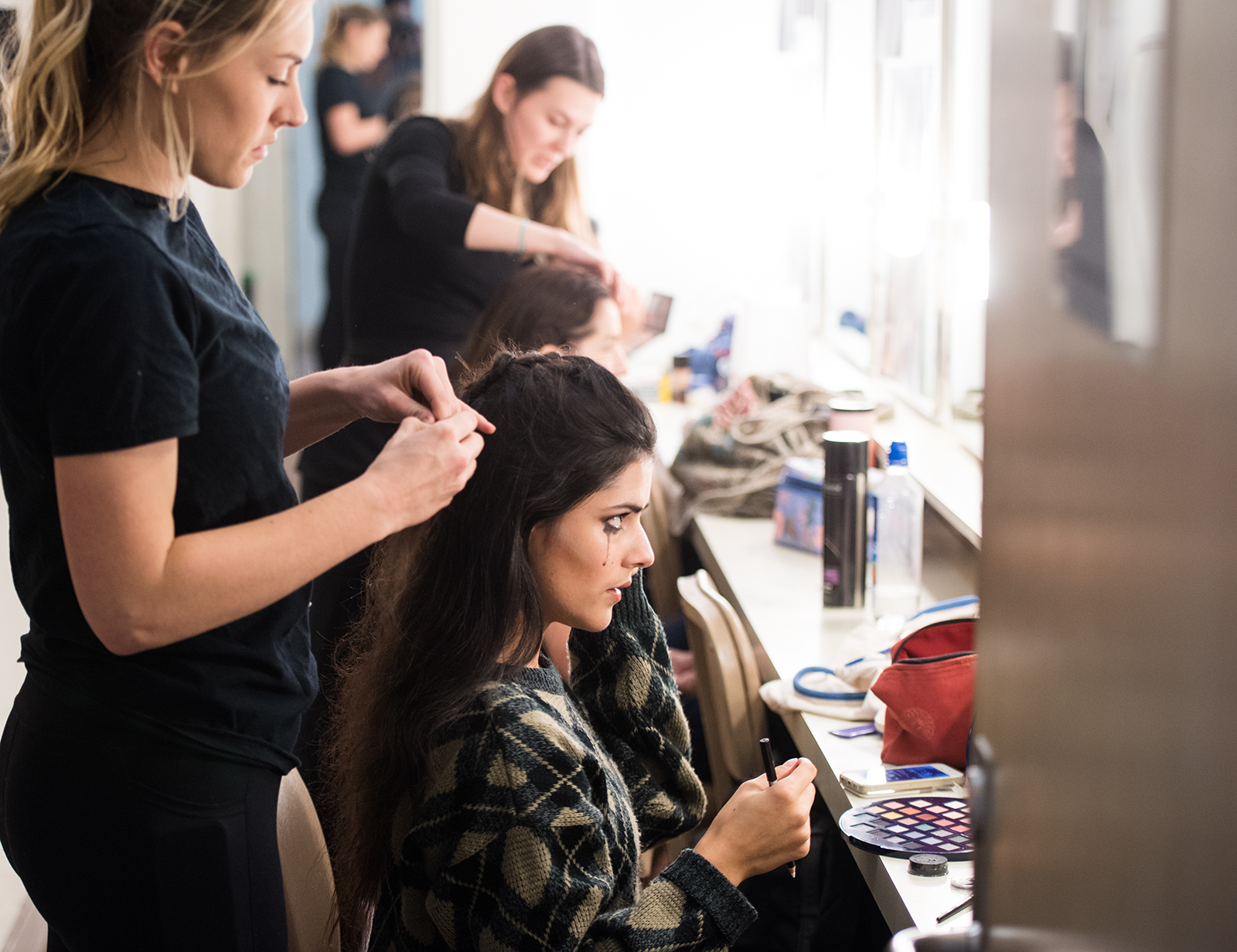‘Medea’ rendition to highlight ancient story of women’s oppression and revenge

Sara Silva, a fourth-year theater student, plays the titular character in UCLA’s production of “Medea.” The Greek classic is about the scorned woman’s violent acts, but on closer examination shows the toxic effects of male entitlement, crew members said. (Anirudh Keni/Daily Bruin)
"Medea"
Feb. 1 - Feb. 9
Little Theater
Prices vary
By Maggie Klein
Jan. 29, 2019 10:29 p.m.
A chorus of veiled women translates intangible concepts into a haunting soundscape for director Sylvia Blush’s rendition of “Medea.”
The play, which opens at UCLA’s Little Theater on Friday and runs until Feb. 9, grapples with issues that have been relevant since the play premiered almost 2,500 years ago, said Blush, a graduate directing student. Euripides’ classic myth focuses on the titular Medea, a scorned woman who seeks revenge on her husband Jason by killing their children. Though it is a story of violence and murder, at its core it is a complex conversation about women’s place in society, said Blush.
“For this to be a play that is done so many years later, there has to be something that doesn’t necessarily redeem (Medea), but helps us understand or ask the questions of how a mother can kill her own children,” Blush said. “You don’t have to agree (with her actions), but they’re justified to Medea.”
Blush approached the challenge of unlocking the vulnerability hidden within Medea’s strength to understand the character’s evolution throughout the story. She said she looked at the events leading up to the final acts of violence to uncover the source of Medea’s anger and grief. Blush found sacrifice to be a root theme; Medea left her home, betrayed her family and used her sorcerous powers to help Jason, only to be betrayed by him. She was promised by oath – which in 431 BCE was regarded highly – that Jason would make her a queen, but he married someone else because Medea couldn’t provide the power he was looking for, Blush said.
“Medea gave up everything for him. … The ideas of Euripides’ time were different than those of 2019, but we’re still asking questions about women’s rights, about the right for women to have their own say in so many issues,” Blush said. “I think what gets overlooked usually is the fact that she’s a woman.”
Ryan Stevens, the dramaturge and a graduate playwriting student, said considering the story of a wronged woman’s wrath within a 21st-century context guided his research on the text and its historical background. He said he views the play as a cautionary tale of ignoring feminist issues; when discussions of equality and welcomeness are pushed off, there’s no choice but to act radically – in Medea’s case, this results in the death of her children, Stevens said.
“There’s some sort of apocryphal saying often used by disenfranchised people which is, ‘Respect our existence or expect our resistance,’ and I think that Medea really summarizes that,” Stevens said. “Her existence has not been respected, so she’s going to resist, violently, in order to be seen.”
Though Medea is the only prominent female character in the original play, Blush said she chose eight women to comprise the traditionally male Greek chorus that guides the audience through the story. Scenic designer and graduate scenic and production design student Madie Hays said while the chorus doesn’t take sides, they mimic Medea’s movements, symbolically supporting her as she speaks to men in power. The chorus acts as a mystical third-party entity that is aware of the full story, but Blush said the central question of the play is deciding who is to blame for the events that transpire: Jason or Medea?
Costume designer Caitlin Kagawa said she reflected on this debate in the costumes by putting Medea and those associated with her in red. Meanwhile, Jason and those on his side are dressed in blue. The chorus wears neutral-colored veils that match the fabric scenery, almost allowing them to become part of the set, Hays said. Since the story features gruesome murder, Kagawa chose the color red for Medea to emphasize her passion and violence.
Stevens said it’s not just the murders themselves that create the horror of the show; it’s the realization that humans are capable of hurting each other. The show is very much about male entitlement and who pays the price when men in power overstep their bounds, Stevens said.
“What if our actions, whether we realize it or not, contribute to making someone feel so disenfranchised and without a home that they have to resort to violent means?” Stevens said. “I think those are the darkest fears.”


